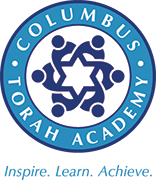
A synagogue, sometimes referred to by the Yiddish term shul and referred to by Reform communities as a temple, is a Jewish house of worship. Synagogues have a place for prayer, where Jews attend religious services or special ceremonies, have rooms for study, social hall(s), administrative and charitable offices, classrooms for religious school and Hebrew school, sometimes Jewish preschools, and often have many places to sit and congregate; display commemorative, historic, or modern artwork throughout; and sometimes have items of some Jewish historical significance or history about the synagogue itself on display.
The history of Jews in Ohio dates back to 1817, when Joseph Jonas, a pioneer, came from England and made his home in Cincinnati. He drew after him a number of English Jews, who held Orthodox-style divine service for the first time in Ohio in 1819, and, as the community grew, organized themselves in 1824 into the first Jewish congregation of the Ohio Valley, the B'ne Israel. This English immigration was followed in the next two decades by the coming of German immigrants who, in contrast, were mostly Reform Jews. A Bavarian, Simson Thorman, settled in 1837 in Cleveland, then a considerable town, which thus became the second place in the state where Jews settled. Thorman was soon followed by countrymen of his, who in 1839 organized themselves into a congregation called the Israelitish Society. The same decade saw an influx of German Jews into Cincinnati, and these in 1841 founded the Bene Yeshurun congregation. To these two communities the Jewish history of Ohio was confined for the first half of the 19th century. In 1850 Ohio had six congregations: four in Cincinnati and two in Cleveland.
Jerome Meyer Schottenstein was an American entrepreneur and philanthropist, co-founder of Schottenstein Stores Corp.

Columbus Torah Academy (CTA) is a Modern Orthodox Jewish K-12 school in Columbus, Ohio.
Temple Beth Israel was a Jewish synagogue located at 840 Highland Road in Sharon, Pennsylvania, in the United States. Originally called House of Israel Congregation, it was founded in 1888 as an Orthodox congregation by Eastern European Jews. The congregation merged with Congregation Rodef Sholom of Youngstown, Ohio in July, 2013; and the former synagogue building was sold to a Christian church in 2014.
The history of the Jews in Vancouver in British Columbia, Canada has been noted since the mid-19th century.

The Jewish community of Houston, Texas has grown and thrived since the 1800s. As of 2008 Jews lived in many Houston neighborhoods and Meyerland is the center of the Jewish community in the area.

The Jewish community of the Greater Cleveland area comprises a significant ethnoreligious population of the U.S. State of Ohio. It began in 1839 by immigrants from Bavaria and its size has significantly grown in the decades since then. In the early 21st century, Ohio's census data reported over 150,000 Jews, with the Cleveland area being home to more than 50% of this population. As of 2018, Greater Cleveland is the 23rd largest Jewish community in the United States. As of 2023, the Cleveland Jewish Community is estimated to be about 100,000 people.
The city of Frederick, Maryland is home to a small but growing Jewish community. With roots dating to the colonial era, Frederick's Jewish community is home to three synagogues, a Hebrew school, and a Jewish community center.
The history of Jews in Milwaukee began in the early 1840s with the arrival of Jewish immigrants from German-speaking states and the Austro-Hungarian empire. Throughout the 19th century, Milwaukee was the hub of Wisconsin's Jewish population with 80% of the state's Jews living there. As of 2011, it is home to 25,800 Jewish people, or 78% of Jews in Wisconsin, and is the 42nd largest Jewish community in the United States.





